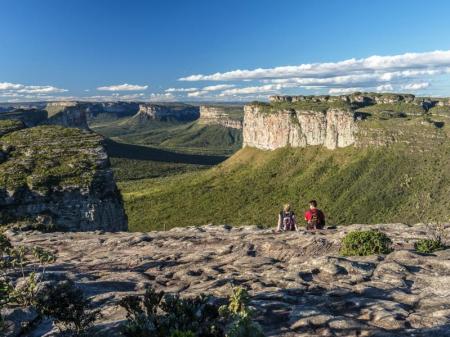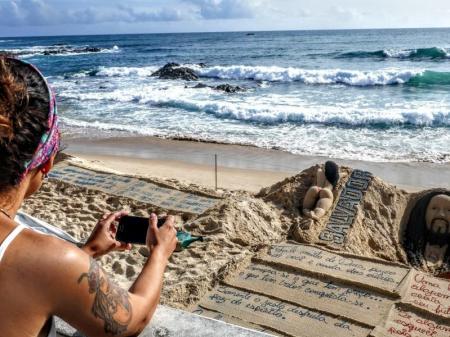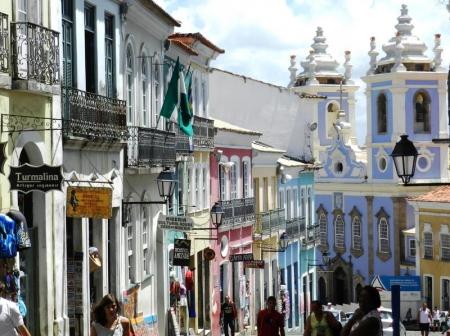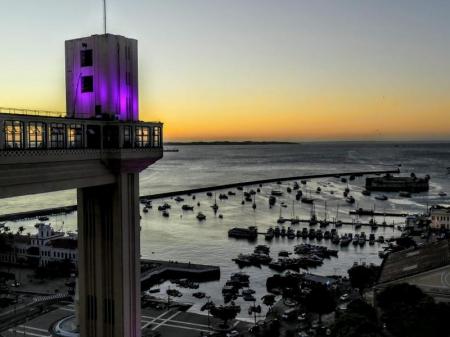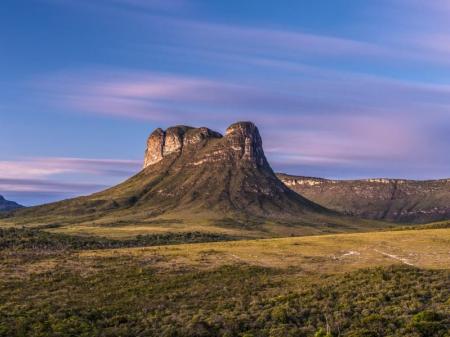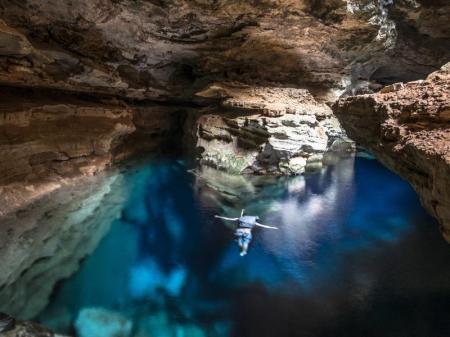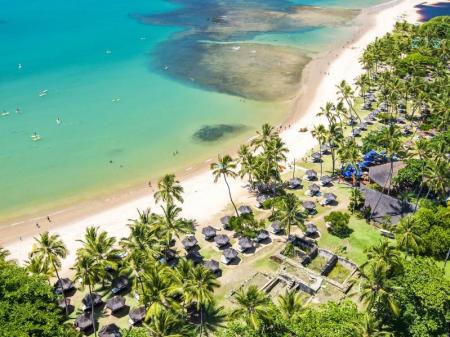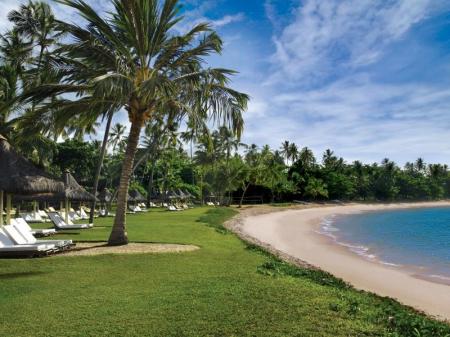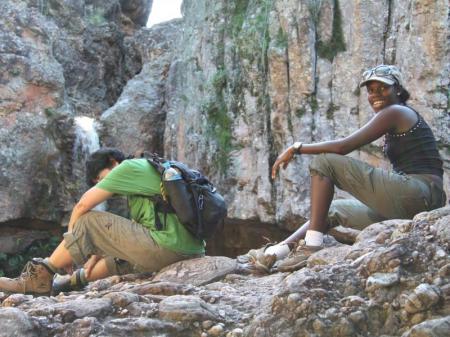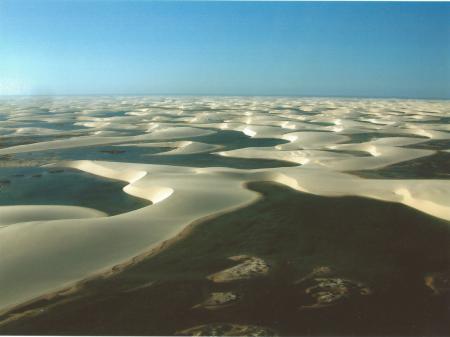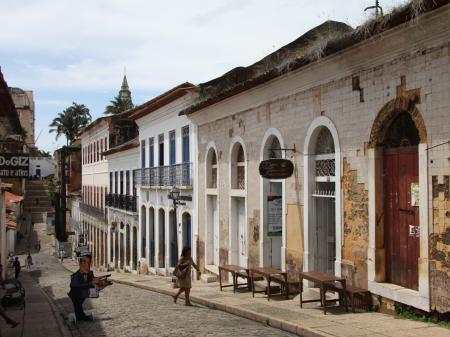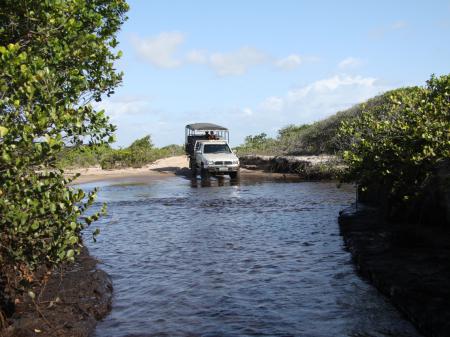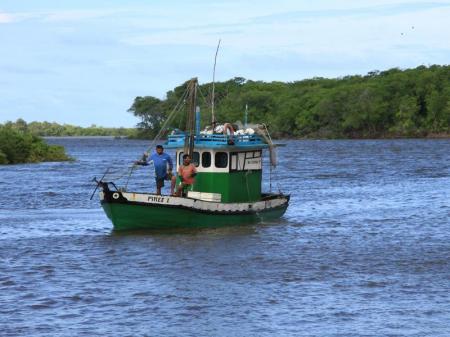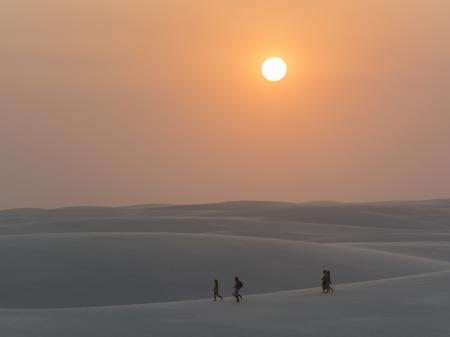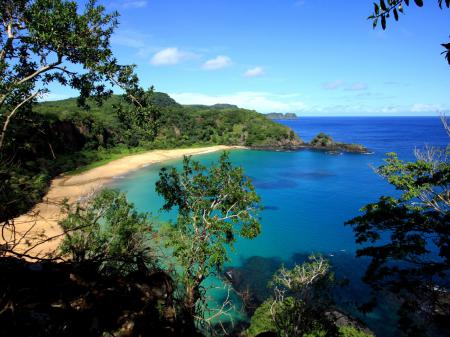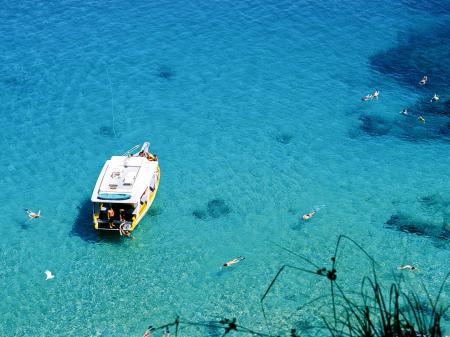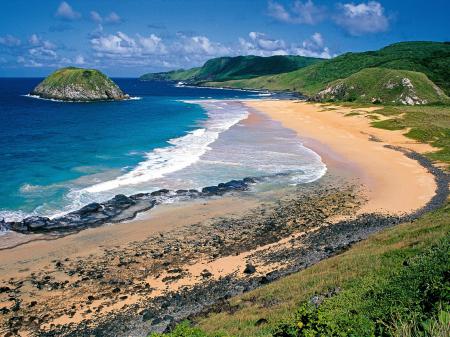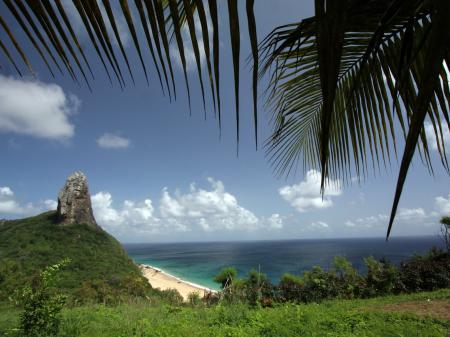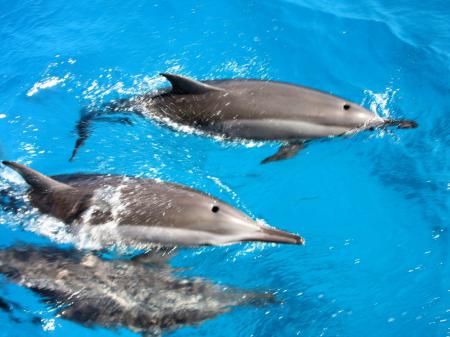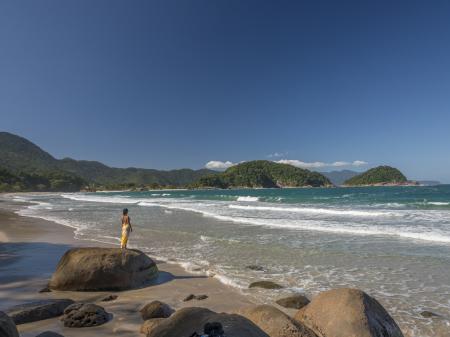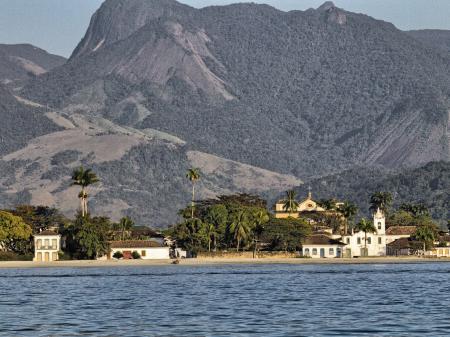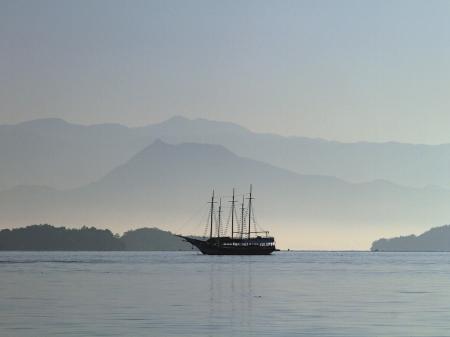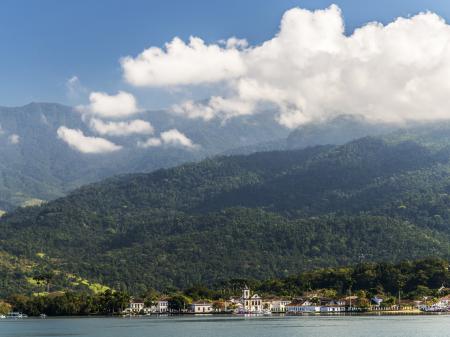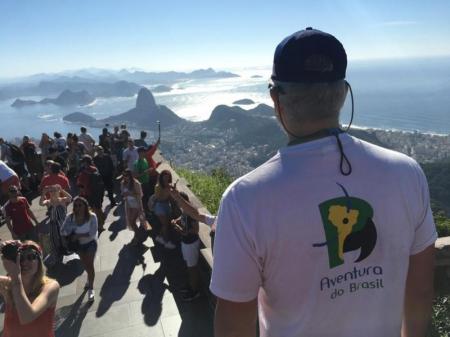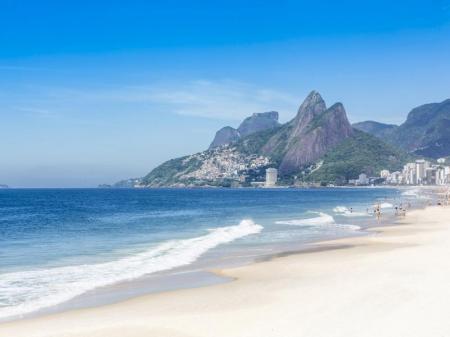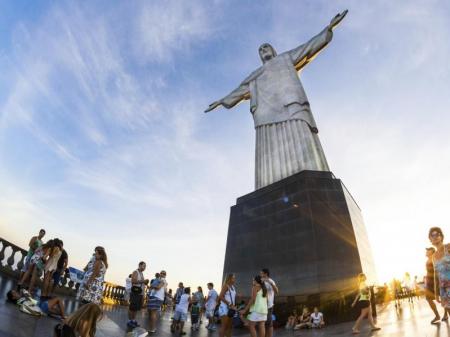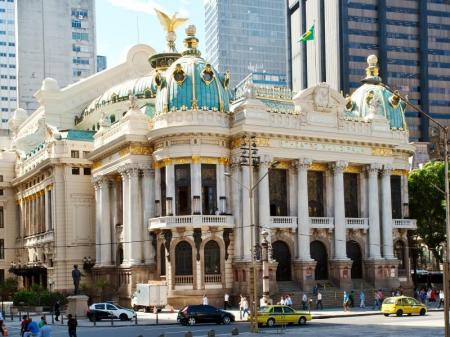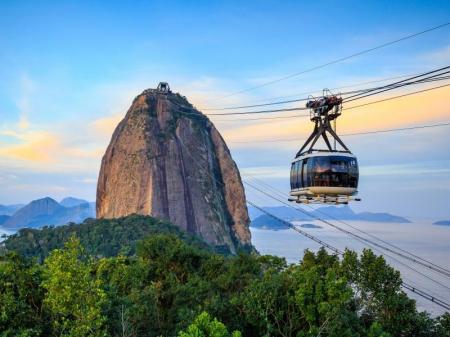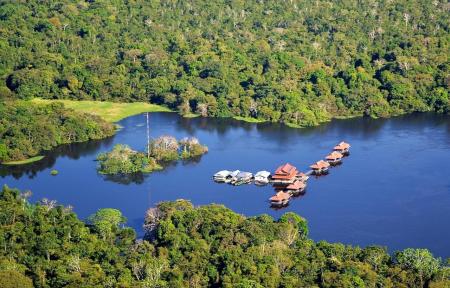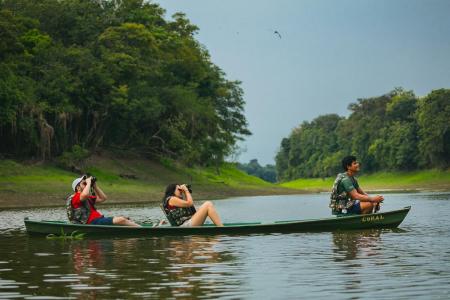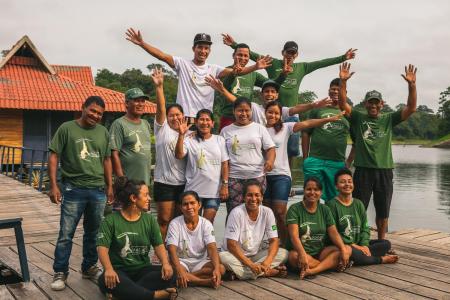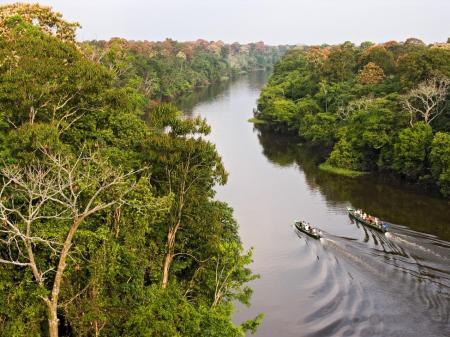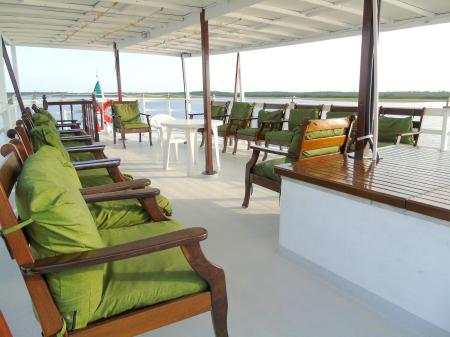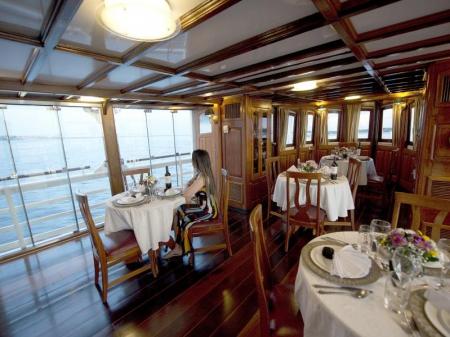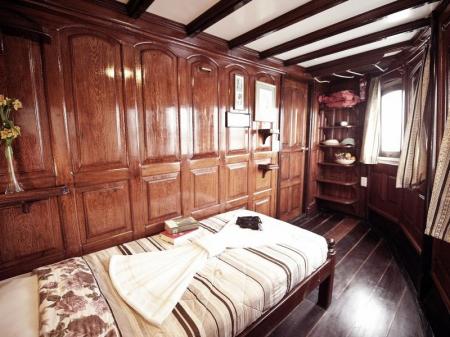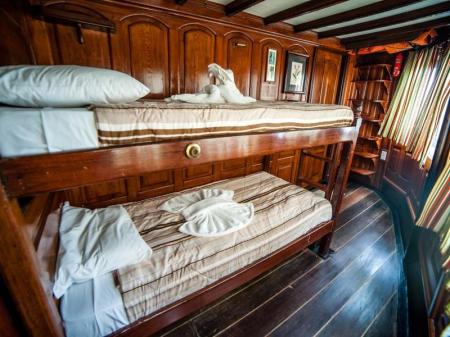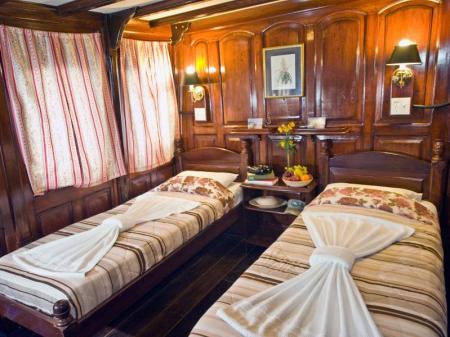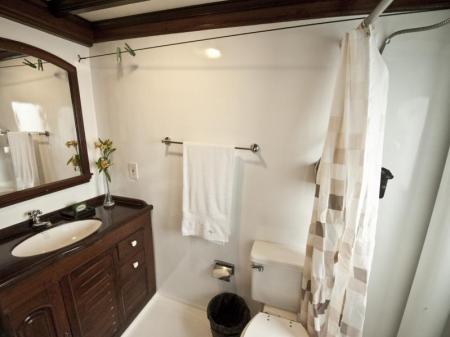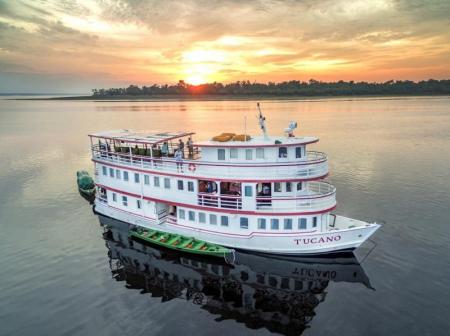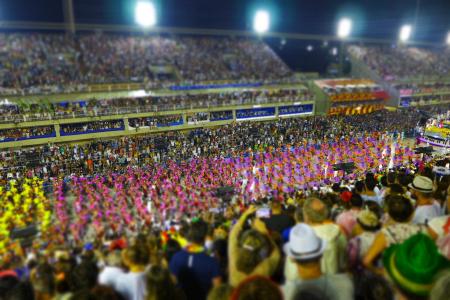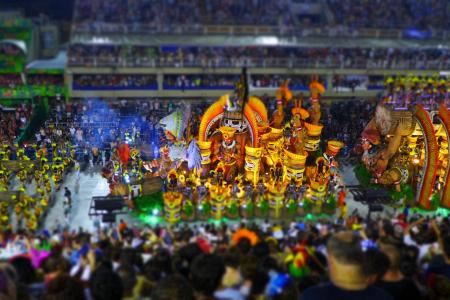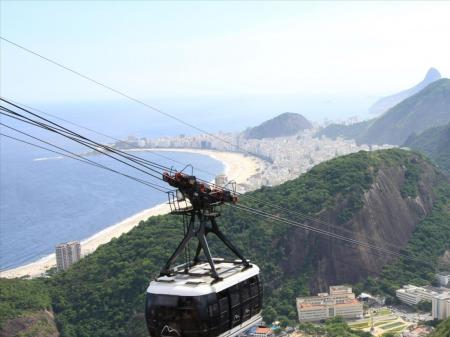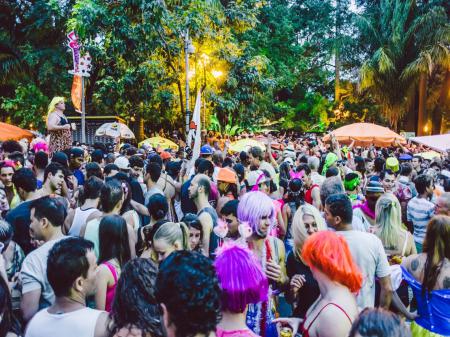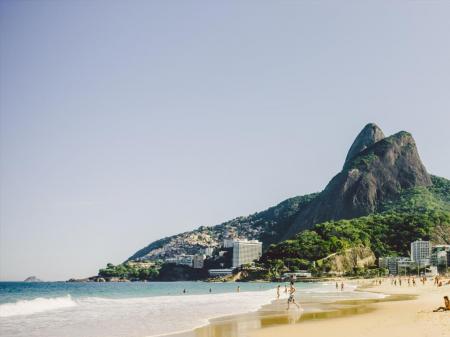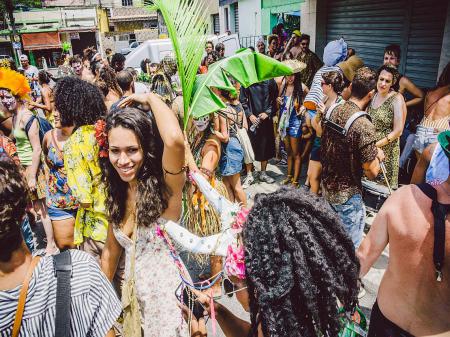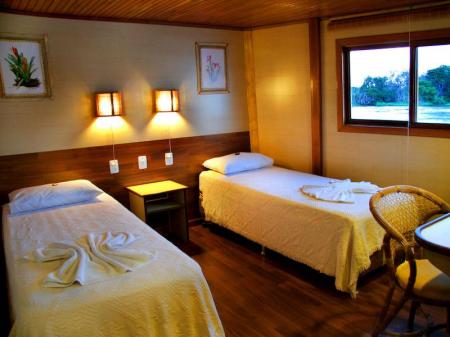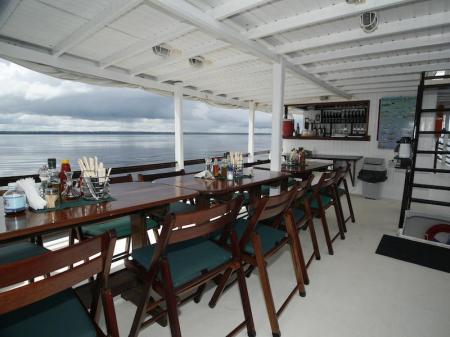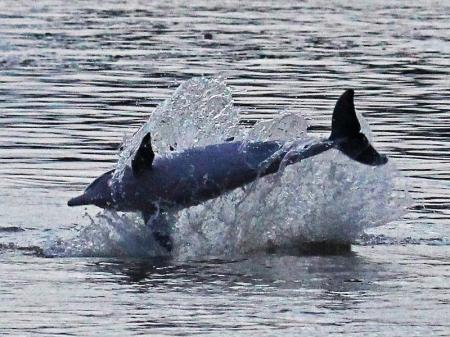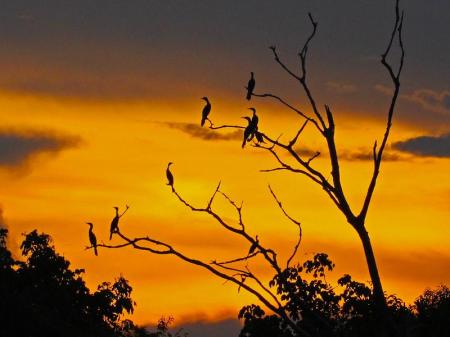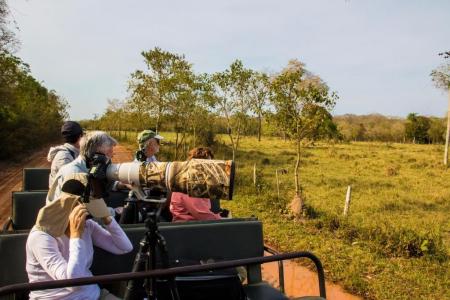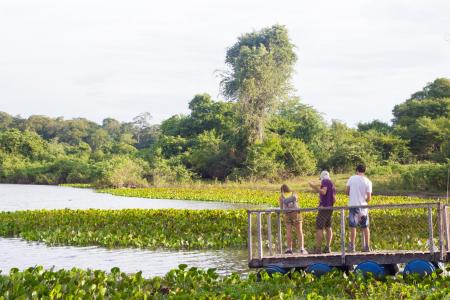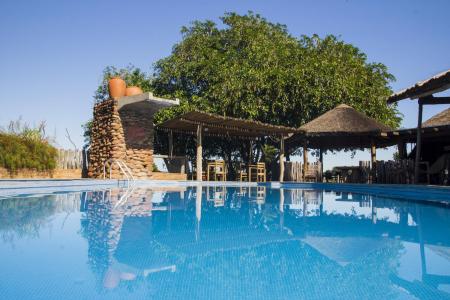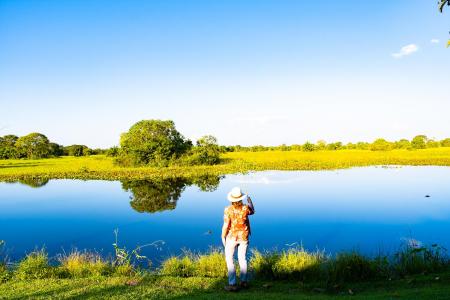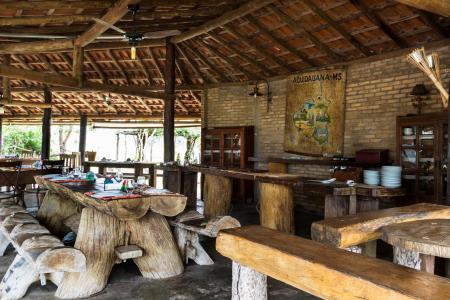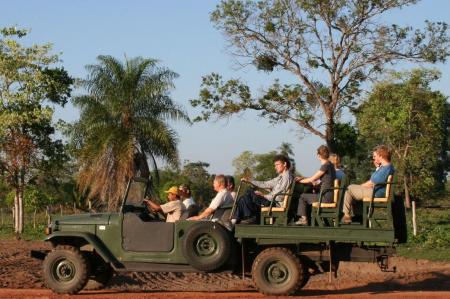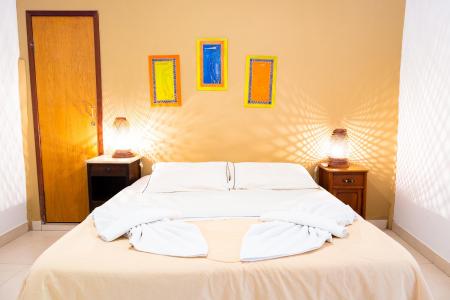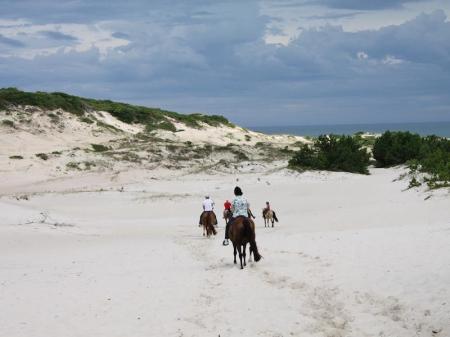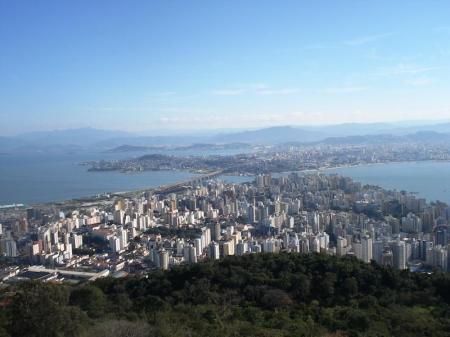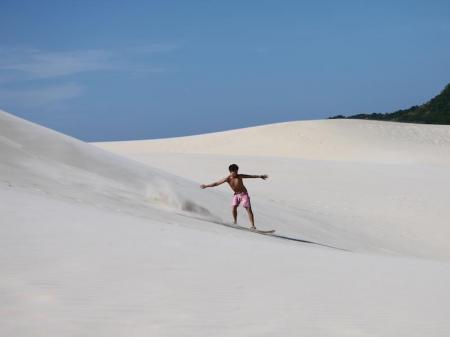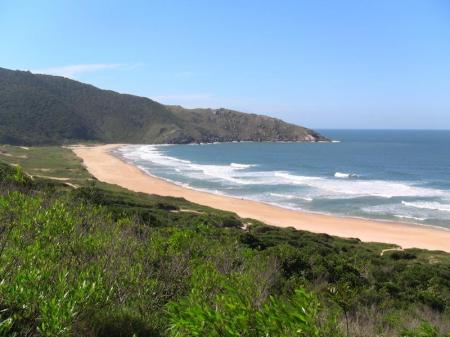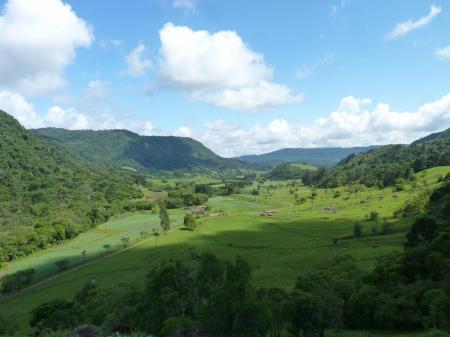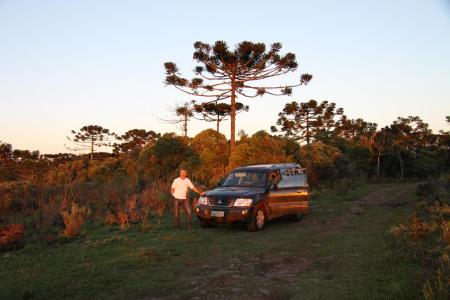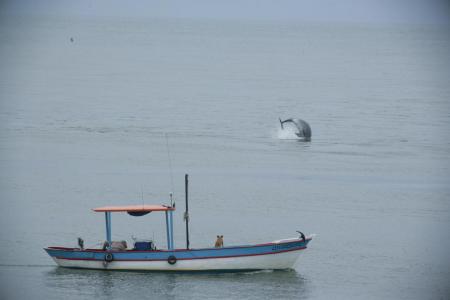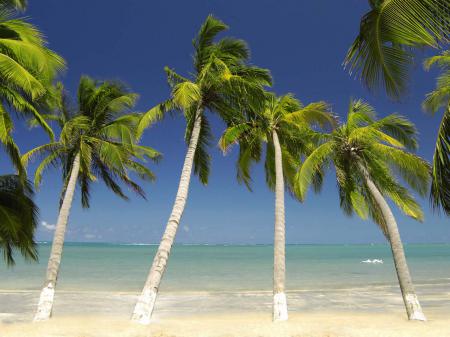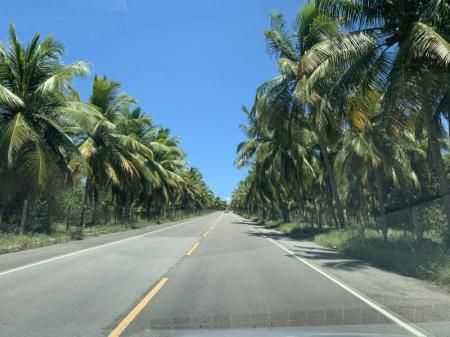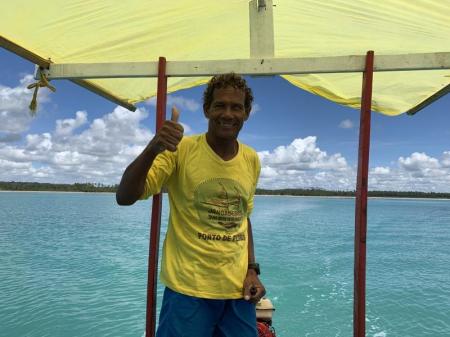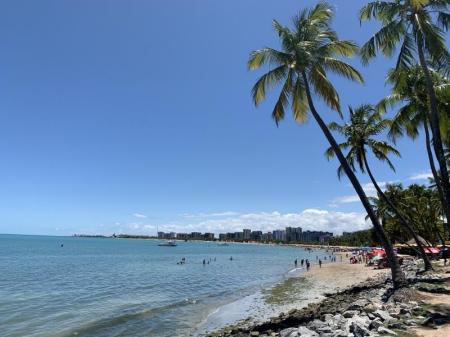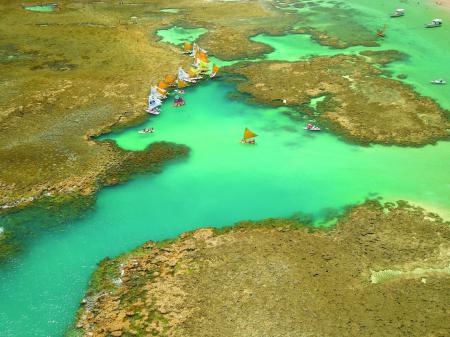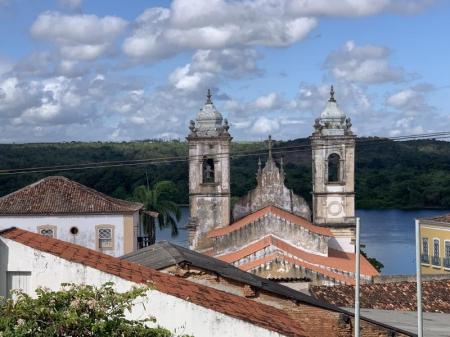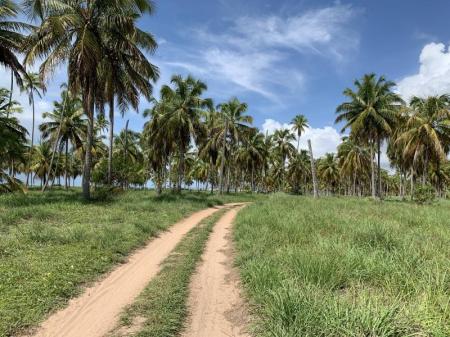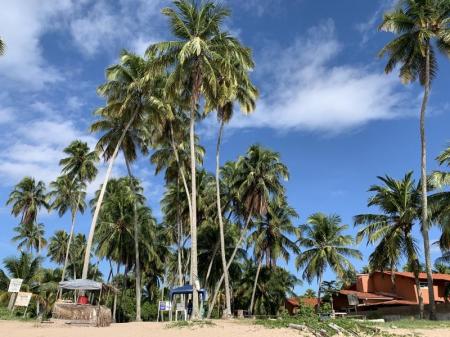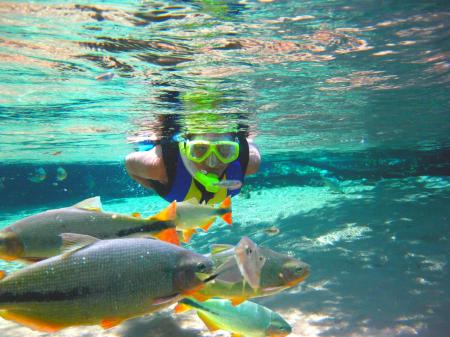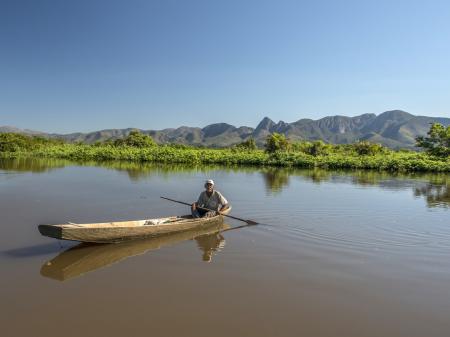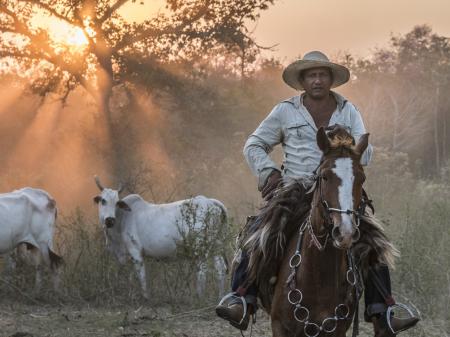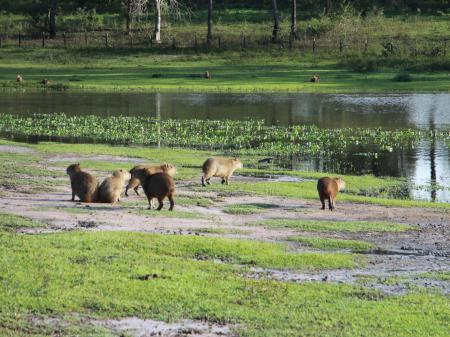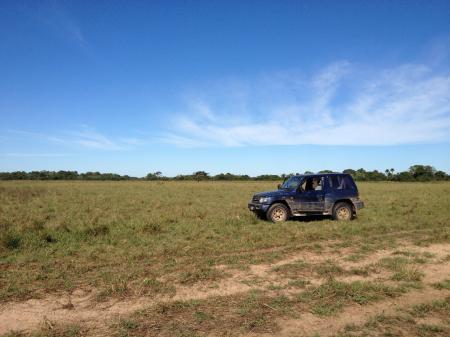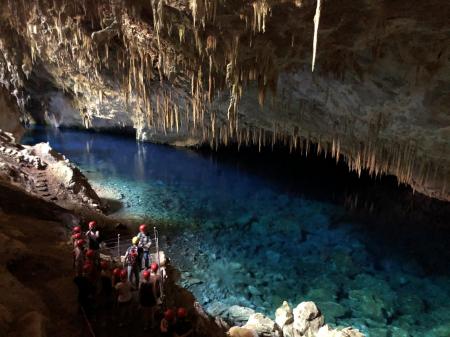Climate and Best Time to Visit Brazil
Brazil is an extraordinarily large country where you can experience different climatic conditions on your journey. While the North and Northeast are dominated by hot and humid tropical climate, travelers in the South of the country experience rather mild weather with moderate temperatures and seasons. When planning a vacation in Brazil, attention must be given to the region and particular season that would be most suitable to you. Since Brazil is located in the southern hemisphere, summer and winter occur at the opposite times of year according to our orientation in the northern hemisphere.
The subtropical climate in the South of Brazil is high in humidity. The summer months (December-February) are hot and humid and winter (June-August) is dry and cool, even cold sometimes. The climate in the Southeast of the country is similar to that in the South, but with a much milder winter. The hot and muggy summer in this region is particularly suitable for a beach getaway.
The central region of Brazil is characterized by tropical climate that is not influenced by the ocean. Very hot temperatures can occur year round, with occasional decreases in the winter months (June-August).
The tropical climate in the North of Brazil, home of the Amazon Rainforest, is strongly influenced by the equator with very high humidity. Constant rainfall is to be expected throughout the region, which is especially strong during the rainy season.
The Northeast of Brazil is also native to tropical climate, which offers ideal conditions for a beach getaway in one of the many seaside resorts along the coast year round. The difference between the dry and rainy seasons is more pronounced the further north the resort is located.
In general, you can enjoy your vacation in Brazil year round. The heavy rainy seasons in the North and Northeast, as well as the rather cool winter in the South, should be avoided if possible, depending on your personal preferences.
Information on the climate tables: The daily high and low temperature values refer to average measurements of more extreme cases. It is therefore very unlikely that it will be hotter or colder than the specified temperature values in the respective month.
Detailed Information on the Best Time to Visit Brazil
Due to the size of Brazil, it is not possible to determine an ideal time to visit the whole country. To that end, we have prepared a detailed page for each of the most frequented regions in Brazil, on which you will find important information about the respective regional climate and ideal times to travel. The links to these pages can be found in the menu on the left-hand side following the information provided below.
Alta Floresta
Alta Floresta, dominated by hot and humid tropical climate, is located at the edge of the Amazon Rainforest. During the rainy season (October to April) a lot of rainfall should be expected. The dry season, especially between May and August, is very suitable for exploring the rich flora and fauna of the Amazon region with small boats in mostly dry weather with high water levels. Here you can find more details about the regional climate and ideal times to travel to Alta Floresta.
The Amazon
The climate in the Amazon region is tropical, offering travelers hot and humid weather year round. The best time to visit is usually from May to August. During these months there is not too much rain and the water level is high enough to take boats into the small rivers and flooded forest areas. This time of year is also ideal for observing wildlife and you can enjoy the maximum amount of daily sunlight. You can read more about the regional climate and ideal times to travel to the Amazon region here.
Belem
The tropical climate in Belem has high air and ocean temperatures year round. During the rainy season from January to May heavy rainfall is almost unavoidable. The best time to visit would be during the dry season from June to December, because you can enjoy the maximum amount of daily sunlight (up to 8 hours) in addition to the hot and relatively dry weather. Here you can find more details about the regional climate and ideal times to travel to Belem.
Belo Horizonte
Belo Horizonte’s subtropical climate boasts hot, humid summers and dry, cool winters. In order to have pleasant weather conditions for your trip, you may want to avoid the hot temperatures and heavy rain in the summer (December to February), as well as the cool weather of winter (June to August). The best time to travel to Belo Horizonte is usually from March to May and September to November, which offer warm weather and average rainfall rates. Learn more about the regional climate and ideal times to travel to Belo Horizonte here.
Blumenau
Due to the subtropical climate, Blumenau has distinct seasons with hot and humid weather in the summer (December to February) and a dry, mild winter that lasts from June to August. If you want to avoid the rain in the summer and the sometimes cold weather in the winter, the best time to travel to Blumenau would be during the spring and autumn months when you can expect warm temperatures and average rainfall. You can read more about the regional climate and ideal times to travel to Blumenau here.
Boipeba
The tropical climate in Boipeba provides warm to hot temperatures for your trip year round. In order to enjoy your beach getaway, you may want to avoid the rainy months from February to July. During the dry period from August to January, sunny and hot weather is reliable. Water temperatures are pleasantly warm year round and ideal for a beach getaway. For more information about the regional climate and ideal times to travel to Boipeba, click here.
Brasilia
The climate in Brasilia is tropical and offers warm to hot temperatures for your trip year round. Between October and April there is a lot of rain in Brasilia. If you are planning excursions in the surrounding areas and discovery tours in the city, the best time to travel would be from May to September. During this time the amount of precipitation is much lower and the weather is mostly warm to hot. Only at night can it get a little cooler sometimes. The maximum amount of daily sunlight also awaits you during the dry season. More information about the regional climate and ideal times to travel to Brasilia can be found here.
Buzios
The small coastal town of Buzios is characterized by subtropical climate, providing warm to hot weather and pleasantly warm water temperatures year round. As there is a lot of precipitation from November to April, a beach getaway should not be planned during these months. The driest months, June to August, can sometimes bring cooler weather. April/May and September/November are usually considered the best time to travel, as they offer warm weather with moderate rainfall. For more information about the regional climate and ideal times to travel to Buzios, click here.
Campo Grande
The climate in Campo Grande is tropical and offers warm to hot temperatures throughout the year. For a trip to Campo Grande and the South Pantanal, the drier period from April to September is usually better suited as it provides the maximum amount of daily sunlight, pleasantly warm temperatures and low precipitation rates. Furthermore, the road conditions in the Pantanal are better in the dry season and usually numerous animals can be sighted. More information about the regional climate and ideal times to travel to Campo Grande can be found here.
Chapada Diamantina
Due to the tropical climate in Chapada Diamantina, the year is divided into a dry season and a rainy season. The dry season, from May to September, is usually more suitable for a trip as there are very warm temperatures. Only at night can it occasionally get a little cooler. At the beginning of the dry season, the rivers and natural pools are at their fullest. For more information about the regional climate and ideal times to visit Chapada Diamantina, click here.
Chapada dos Guimaraes
The tropical climate in the region of Chapada dos Guimaraes offers warm and hot weather for your trip year round. During the dry season, which lasts from May to September, it can occasionally cool down a bit. However, sunny weather usually prevails. During the rainy season, from October to April, rainfall is constant, but temperatures are consistently high. More about the regional climate and ideal times to travel to Chapada dos Guimaraes can be found here.
Chapada dos Veadeiros
The tropical climate in the region of Chapada dos Veadeiros offers warm to hot temperatures year round. During the rainy season, which lasts from October to April, there is usually a lot of rainfall and constantly high temperatures. You can enjoy the maximum amount of sunlight from May to September. During these months, Chapada dos Veadeiros also has very dry and warm weather, which only cool down a little on occasion. For more information about the regional climate and ideal times to visit Chapada dos Veadeiros, click here.
Cuiaba
The tropical climate in Cuiaba divides the year into a dry season and a rainy season. Since Cuiaba is usually a starting point for excursions in the Pantanal, it is an important city to include in your considerations concerning ideal times to travel. During the rainy season, large parts of the Pantanal are often flooded and cannot be reached. The dry season from April to October is more suitable since temperatures are high and many animals can be observed. More about the regional climate and ideal times to travel to Cuiaba can be found here.
Curitiba
The subtropical climate in Curitiba offers a hot and humid summer and a dry and cool winter. Due to heavy rainfall from December to February and cool to cold weather in the winter months from June to August, spring and fall are usually considered the best times to travel to Curitiba. During this time warm temperatures and average rainfall are certain. For more details about the regional climate and ideal times to visit Curitiba, click here.
Fernando de Noronha
On the island of Fernando de Noronha, where tropical climate reigns, warm to hot weather is guaranteed year round. The most suitable time to go depends on the activities you plan to do during your vacation. However, the dry season from August to January is usually considered the best time to travel. An optimal period for diving excursions would be from July to November. Specific information about the regional climate and ideal times to visit Fernando de Noronha can be found here.
Florianopolis
The subtropical climate in Florianopolis usually leads to a hot and humid summer and a dry and cool winter. Despite increased rainfall, the best time for a beach getaway would be in the summer from December to February. If you want to avoid the hot and humid weather in the summer and the partly cold winter weather for your excursions and discovery tours in Floripa and its surroundings, spring and fall are the optimal seasons for your vacation. Here you can find out more about the regional climate and ideal times to visit Florianopolis.
Fortaleza
The tropical climate in Fortaleza offers travelers in the region warm to hot weather year round with consistently pleasant water temperatures—ideal conditions for a relaxed beach getaway along the northeastern coast of Brazil. In the rainy season from January to June, however, a lot of precipitation is to be expected. Therefore, the dry season is usually mentioned as the best time to travel to Fortaleza. You can read more about the regional climate and ideal times to visit Fortaleza here.
Foz do Iguacu
Foz do Iguacu‘s subtropical climate welcomes travelers with a hot and humid summer and a dry and cool winter. The best time to visit the Iguacu Waterfalls is usually from November to April. During this time the temperatures are warm to hot, but do not forget a rain jacket. If the summer months are not ideal, you may want to consider April to July, when temperatures are more moderate and there is less rain. You can find more detailed information about the regional climate and ideal times for a vacation in Foz do Iguacu here.
Ilha de Marajo
Ilha de Marajo, ruled by tropical climate with high humidity, is one of the rainiest areas of Brazil. During the rainy season from January to June many parts of the island are flooded and difficult to navigate. Excursions are more suitable from July to December. In addition, you can enjoy the beautiful beaches of the island and the maximum amount of daily sunlight. More information about the regional climate and optimal times to travel to Ilha de Marajo can be found here.
Ilha do Mel
Ilha do Mel‘s subtropical climate offers hot and humid summers with dry and cool winters. If you are planning a beach getaway or would like to explore the beautiful surroundings on excursions, the optimal time to do so would be from November to April. During this time you can expect warm to hot weather and pleasant water temperatures. As it often rains, do not forget to bring a jacket. Here you will find more detailed information about the regional climate and ideal times for your vacation in Ilha do Mel.
Imbassai
Imbassai‘s tropical climate allows you to enjoy warm to hot weather and very warm water temperatures year round. However, high rainfall rates during the rainy season, which lasts from March to August, can be a hindrance for a relaxing beach getaway. It is especially rainy from April to June. To that end, the best time to visit Imbassai would be during the dry season from September to February. You can enjoy the dry and warm to hot weather as well as a good amount of daily sunlight. More specific information about the regional climate and ideal times to travel to Imbassai can be found here.
Jericoacoara
Jericoacoara, located in the North of Brazil, is dominated by tropical climate. Temperatures are very high year round. For a beach getaway in Jericoacoara, the rainy season, from January to May, should be avoided. A more suitable time would be during the dry season from June to December, when you can enjoy the beach in dry and warm to hot weather. You can find out more about the regional climate and ideal times to travel to Jericoacoara here.
Lencois Maranhenses
The Lencois Maranhenses National Park is home to tropical climate with consistently high temperatures. In order to be able to admire the beautiful lagoons during your vacation and maybe even take a swim, June to September ought to be considered. Moreover, it does not rain so much during this time and you can enjoy the dry, warm weather. You can find out more about the regional climate and ideal times to visit the Lencois Maranhenses National Park here.
Manaus
The climate in Manaus is tropical and therefore has hot and humid weather year round. During the rainy season from December to May, there is a lot of rainfall in Manaus and the entire Amazon region. The best time to travel is usually from May to August as the water level is high enough to explore the small side rivers. Many animals can be observed and you will also experience the maximum amount of daily sunlight. Click on the following link for more information about the regional climate and ideal times to travel to Manaus.
Morro de Sao Paulo
The climate on the island of Morro de Sao Paulo is tropical and offers very warm weather and pleasant water temperatures year round. From February to August it usually rains a lot, so do not forget to pack a raincoat should you travel during this time. In the dry season from September to January you can enjoy dry and warm to hot weather and up to 8 hours of daily sunlight. More specific information about the regional climate and ideal times to spend your vacation in Morro de Sao Paulo can be found here.
Natal
Natal is dominated by tropical climate, meaning that the weather is warm to hot year round and the ocean is always pleasant for swimming. Given that constant heavy rainfall is to be expected during the rainy season from March to July, these months are less suitable for a relaxing beach getaway in Natal. From August to February you can enjoy dry and warm weather and up to 9 hours of daily sunlight. You can find out more about the regional climate and ideal times to visit Natal here.
Nilo Pecanha
The climate in Nilo Pecanha is tropical and offers high temperatures year round with many hours of sunlight. Especially during the rainy season from February to July there can be a lot of precipitation. The highest temperatures occur from December to March. Therefore, the best time to travel to Nilo Pecanha is usually between August and November, as temperatures are more moderate but still very warm and it is less rainy. Learn more about the regional climate and ideal times to travel to Nilo Pecanha here.
North Pantanal
The tropical climate in the North Pantanal usually brings hot weather and strongly changing rates of precipitation. During the rainy season from October to April, flooding can make it difficult to reach some areas and animals are less easy to spot. In the remaining months, and especially from June to October, the weather is drier, the roads are more passable and there is an especially high number of animals to be seen. Details about the regional climate and ideal times to travel to the North Pantanal can be found here.
Nova Friburgo
Despite the subtropical climate, winter in Nova Friburgo is generally very cold but also dry due to its position on the plateau. Therefore, this period is very suitable for extensive hikes. If you prefer warm temperatures and want to avoid the large amounts of precipitation in the summer (December to February), the best time to travel would be from March to May or September to November. For further information on the regional climate and ideal times to travel to Nova Friburgo, click here.
Olinda
The tropical climate in Olinda offers warm to hot temperatures for your trip year round. The rainy season from March to July may be less suitable if your plans are to get to know the city or spend a beach getaway in the area. From August to March you can expect high temperatures and dry weather, which is much more ideal for a beach getaway near Olinda. If the city of Olinda itself is a point of focus on your trip, you may want to avoid the hottest summer temperatures from December to February. You can find out more about the regional climate and optimal times to travel to Olinda here.
Ouro Preto
The climate in Ouro Preto is subtropical and has warm to hot temperatures year round. Usually the summer months from December to February are a good time to travel due to the warm to hot weather, but there can also be a lot of rain. In the spring and fall you can enjoy drier weather with equally warm temperatures. The winter (June to August) can sometimes be quite cold. For more information about temperatures and the best time to travel to Ouro Preto, click here.
Paraty
Due to the subtropical climate and proximity to the ocean, the weather in Paraty is warm year round. Water temperatures are consistenly suitable for a beach getaway. Please note, however, that the summer months (December to February) are very hot and rainy and the winter months (June to August) can sometimes be a bit cooler. Details about the weather and ideal times to travel to Paraty can be found here.
Porto Alegre
Porto Alegre‘s subtropical climate brings hot, dry summers and cold winters. The cool and rainy winter (June to August) should be avoided, or in this case do not forget to pack warm and rainproof clothing. The summer (December to February) can be very hot at times. If you want to avoid the high temperatures, spring and fall, which have warm weather with average rainfall, would be suitable. Find out more about the regional climate and ideal times to spend your vacation in Porto Alegre here.
Porto de Galinhas
The tropical climate in Porto de Galinhas provides warm to hot weather and pleasant water temperatures for your trip year round. If you are planning a beach getaway, you may want to avoid the rainy months from March to August. The best time to visit Porto de Galinhas is usually the dry season from September to February, when you can enjoy up to 9 hours of daily sunlight. For more information about the regional climate and ideal times to travel to Porto de Galinhas, click here.
Porto Seguro
Due to the tropical climate, Porto Seguro has high temperatures and a lot of rainfall throughout the year. January and February are the months with the least amount of rainfall, which is why they are considered the best time for a beach getaway. If you prefer to explore the city itself rather than the beach, you may want to avoid the hot summer weather (December to February) and choose the cooler months from May to October. For more details about the regional climate and ideal times to travel to Porto Seguro, click here.
Praia da Pipa
The tropical climate in Praia da Pipa offers ideal conditions for a beach getaway from August to February. Besides the dry and hot weather, the maximum amount of sunlight can be enjoyed during these months. For those who prefer to avoid the high temperatures, August to October is a good alternative as the weather is merely warm and dry. Here you can get more information about the regional climate and ideal times to travel to Praia da Pipa.
Praia do Forte
The best time to travel to Praia do Forte for a beach getaway is from September to February, when there is warm to hot weather and low rainfall rates. From March to May there is usually a lot of rain, while from June to September is dry but can occasionally be a little cooler. Read more about the regional climate and ideal times to visit Praia do Forte here.
Recife
The best time to travel to Recife is usually during the dry season, which lasts from September to February. You can enjoy up to 9 hours of daily sunlight in addition to the dry, hot weather. Due to the tropical climate, there is usually a lot of precipitation during the rainy season. For a trip during this time, rain gear must be considered. However, temperatures are pleasantly warm to hot even in the rainy months. Further information about the regional climate and optimal times to travel to Recife can be found here.
Rio de Janeiro
The best time to visit Rio de Janeiro depends on your vacation preferences. For a beach getaway, the summer months from December to February are best suited as temperatures are particularly high. If you prefer to go on excursions in the surrounding areas and avoid hot weather, the rest of the year has milder temperatures. It usually rains the most from December to March. Detailed information about the regional climate and ideal times to travel to Rio de Janeiro can be found here.
Salvador
Salvador offers warm to hot weather and pleasant water temperatures year round. Only in the winter months from June to August can you occasionally experience slightly cooler temperatures. For a beach getaway, the rainy months from March to August should be avoided so that you can relax on the beach without getting wet. You can find out more about temperatures and ideal times to visit Salvador here.
Sao Luis
Due to the tropical climate in Sao Luis, the year is divided into a rainy and a dry season. The best time to visit is usually from July to December. During this time, you can enjoy the maximum amount of daily sunlight in addition to dry and hot weather. Water temperatures are very suitable for a beach getaway year round. You can find out more about temperatures, probability of rain and optimal times to travel to Sao Luis here.
Sao Paulo
Due to the subtropical climate you will experience a hot and humid summer and a cool and dry winter in Sao Paulo. If you want to avoid the hot weather and large amounts of precipitation in the summer (December to February), or the sometimes cold temperatures in the winter (June to August), the best time to travel would be in the spring and fall. These months usually offer warm weather and average rainfall. You can find out more about the regional climate and ideal times to travel to Sao Paulo here.
South Pantanal
Due to the tropical climate, the South Pantanal offers warm to hot weather for your trip year round. During the rainy season from November to April some roads are often flooded and difficult to drive on. As there are also fewer animals to observe during these months, it is better to make your trip during the dry months of May to November. You can expect warm temperatures, dry weather and you can usually see many animals and migratory birds. This link will direct you to more detailed information about the regional climate and the best time to travel to the South Pantanal.
Tefe
Tefe is mostly viewed as a starting point for trips to the Amazon, which should be taken into account when planning. The tropical climate provides Tefe with hot temperatures year round. The best time to travel is usually between June and October, as the water level is high enough to take boats into the tributaries. In addition, these months are the driest, but occasional rainfall must still be expected. For more information on the regional climate and ideal times to visit Tefe, click here.
Trancoso
The tropical climate in Trancoso offers warm to hot weather year round with marginal fluctuations in rainfall. The least amount of rain occurs from January to March, which is why this period is often considered the best time to travel. In addition, you can enjoy pleasant water temperatures, hot weather and the maximum amount of daily sunlight. The remaining months of the year are still ripe for a relaxing beach getaway. More about the regional climate and ideal times to travel to Trancoso can be found here.
Urubici
The climate in Urubici is subtropical, but due to the city’s altitude the winter (June to August) can be very cold. Those who wish to travel during these months ought not forget to pack warm clothing. The beautiful landscape is best admired from March to May, facilitated by dry, warm weather. From August to February there can usually be a lot of rain. You can read more about temperatures, probability of rain and ideal times to travel to Urubici here.
This journey will expose you to the wide diversity of Bahia: the famous historical center of Salvador, adventurous tours in Chapada Diamantina National Park, and palm-lined dream beaches. Colorful little streets, waterfalls, caves, table mountains, tropical culinary specialties, and much more await you on this tour to the most beautiful places in Bahia.
Visit one of the natural highlights of Brazil: the worldwide unique landscape of Lencois Maranhenses National Park. The wavy sand dunes spread like an endless bed sheet and give the region its name. This remote region between dunes and the ocean is home to indigenous villages and nature along rivers such as the spectacular Rio Preguicas.
This trip takes you to the Fernando de Noronha archipelago, which consists of 21 islands. Fernando de Noronha is located in the Atlantic Ocean, 215 miles (345 kilometers) off the Northeastern shores of Brazil. It is a paradise for ecotourism and sustainable travel and is especially known for its numerous natural attractions and water sports.
If you would like to get to know many facets of Brazil within a few days, you do not have to travel far. In the state of Rio de Janeiro the most famous sights of the country are waiting for you. Not only are there famous structures and monuments in this tropical metropolis, but colonial buildings, art, culture, the Atlantic Rainforest, beaches, and fjords also unite here. Let yourself be enchanted by these absolute must-see landmarks of Rio de Janeiro.
Uakari Lodge is about a one-hour flight west of Manaus in the Brazilian Amazon region. The local airport in Tefe is 1.5 hours away from the Mamiraua Reserve, where Uakari Lodge is located. This last part of the transfer is made by boat.
Our expedition cruises on the motor yacht Tucano provide a unique insight into the breathtaking flora and fauna of the gigantic Amazon Rainforest. Our two packages of 5 or 7 days allow you to experience the wonderful Anavilhanas Archipelago and Rio Negro, north of Manaus. During daily small-group expeditions with an experienced English-speaking guide, you will explore Amazon, for example, on canoe tours, piranha fishing trips, rainforest walks, and visits to small Amazon villages.
Experience Carnival in Rio de Janeiro together with your local English-speaking guide and become part of one of the largest celebrations in the world! On this tour you will not only get to know the highlights of Rio, such as Corcovado and Copacabana, you will also mingle with Cariocas, as the inhabitants of the city are called. Another highlight is a visit to the Sambadrome, where the huge, colorful parades of the big samba schools of Rio take your breath away.
On our river cruises, you can experience the beautiful Amazon region with its diverse animal and plant life. You can choose from three different routes: Rio Negro, Rio Amazonas (Rio Solimoes), or both. Each cruise offers different exciting excursions, such as boat expeditions, nature hikes, or visits to local communities. Another highlight is wildlife observation. With luck, you might be able to spot monkeys, dolphins, sloths, otters, caimans, and a wide variety of birds.
Pousada Aguape is located in the middle of the unique landscape of the southern Pantanal. The accommodation is a typical farm, the fazenda has been family-owned for over 150 years and now also accommodates tourists in addition to the traditional cattle breeding. On various excursions and safari tours by boat, horse or on foot, travelers can experience the unique nature of the Pantanal.
Let yourself be enchanted by the diversity of the South of Brazil during this trip by rental car. From Porto Alegre you will start your journey to the most popular wine region in the country and learn about the history of Italian immigration and local wineries first hand. In the interior of the country, you will hike and admire an impressive landscape with canyons 3,000 feet (900 meters) deep and up to 160 miles (250 kilometers) long. You design your daily program and determine the rhythm of your journey. On the way to the "Magic Island" of Florianopolis, many interesting places pull you in every direction. Enjoy the rich cultural and culinary offerings as well as the region's exuberant hospitality.
On this self drive tour through the Northeast of Brazil you will explore the unique coastal section from Recife to Salvador. Bask by picturesque beaches, crystal clear waters, panoramic landscapes, and colonial flair and discover the diverse surroundings and the unique Brazilian way of life on your own.
This trip will take you to the natural paradise of the South Pantanal. You will also get to know the unique nature and crystal clear rivers near Bonito. The Pantanal is a vast area of wetlands and one of the largest nature reserves in the world. In the dry season, from June to October, you can explore the whole variety of the incomparable animal world and in the rainy season, from December to March, the beautiful flora reaches its peak. Let the fascinating biodiversity of the Pantanal enchant you!


